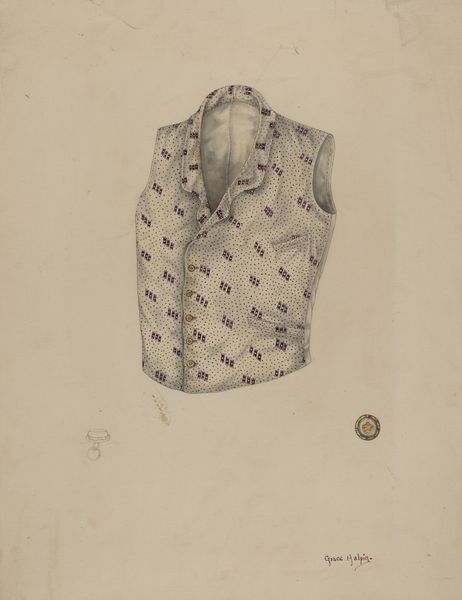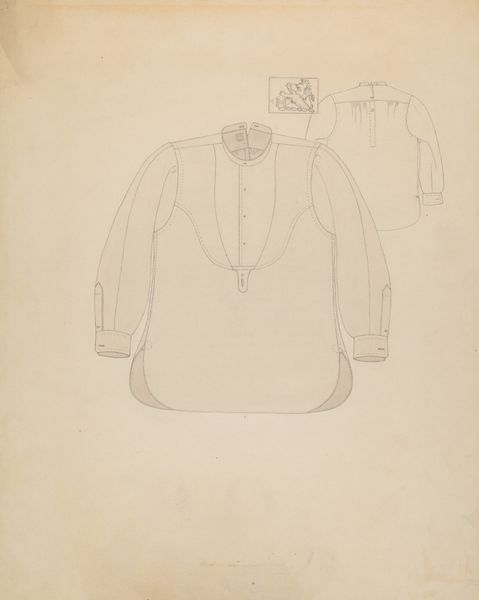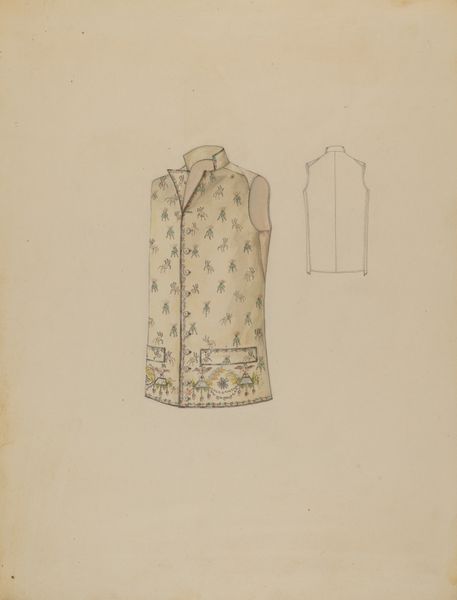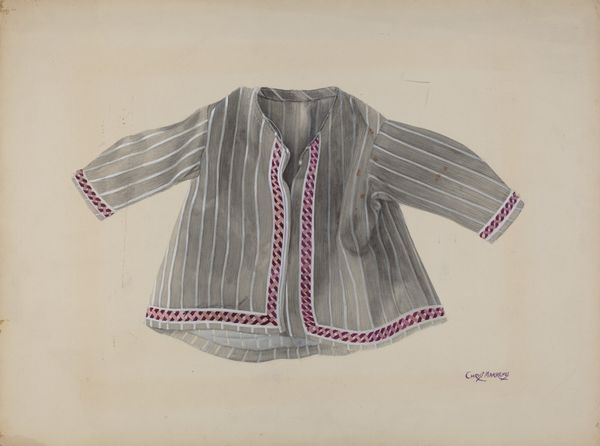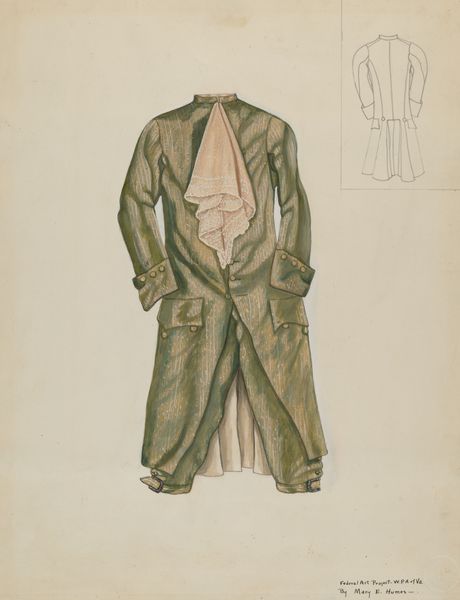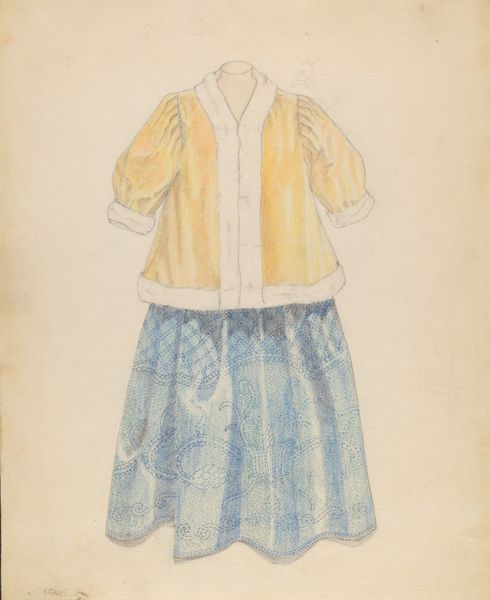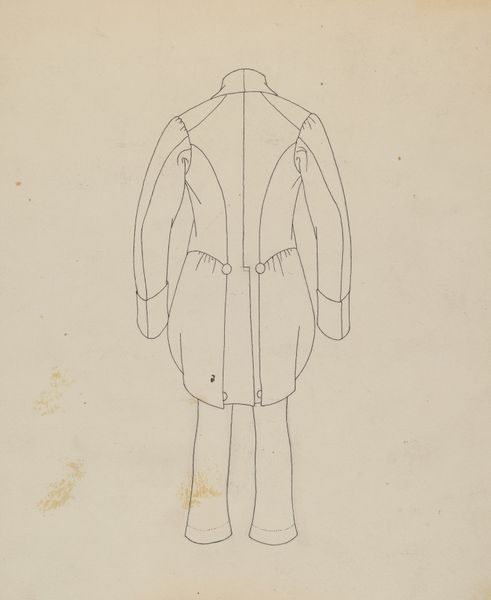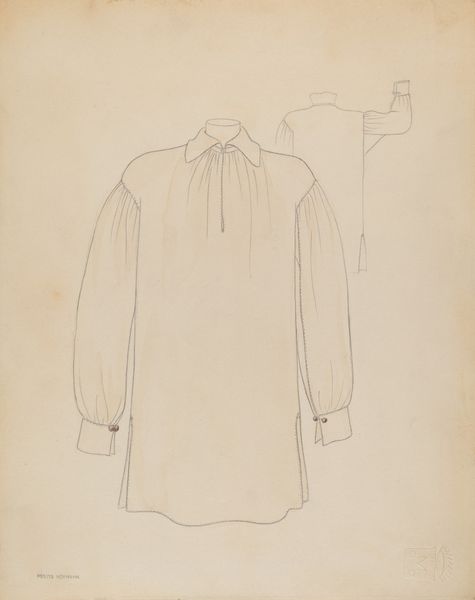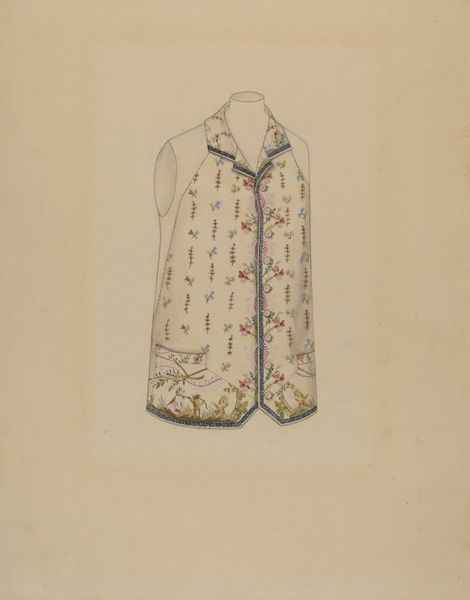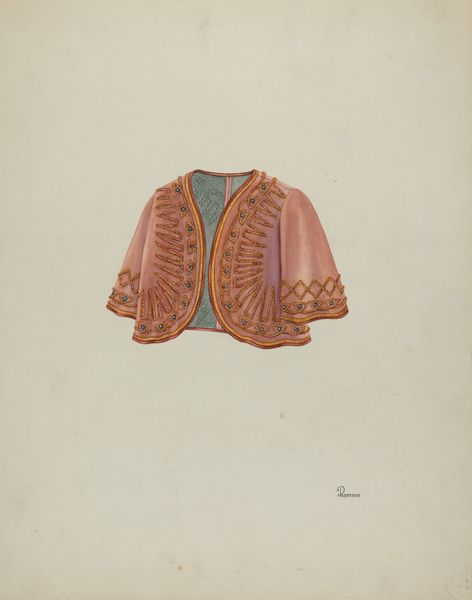
drawing, pencil
#
drawing
#
pencil drawing
#
pencil
Dimensions: overall: 36.6 x 32.8 cm (14 7/16 x 12 15/16 in.)
Copyright: National Gallery of Art: CC0 1.0
Curator: Editor: This drawing, "Jacket," from around 1937, simply rendered with pencil, features two sketches of what looks like a rather vibrant jacket. It's a burst of colour against the paper. What strikes me is the attention to detail in the plaid pattern. How do you interpret this work, particularly its creation in the late 1930s? Curator: The focus on the garment itself invites us to consider its production. We might investigate where the cloth was sourced, who wove it, who designed and manufactured the jacket itself, and finally, who would have consumed this garment. The use of plaid could also suggest links to specific textile traditions and their cultural significance. Is it imitating hand-woven cloth? Editor: So, it's not just about the aesthetic but about the whole process behind making something like this. It's almost like the drawing serves as a document of labour and consumption. But would such considerations truly be important to the artist? Curator: Perhaps. Consider the rise of industrial manufacturing during that period and its impact on craftsmanship. Maybe this sketch implicitly asks: What is lost when fashion becomes industrialized? How do mass-produced items change our relationship to clothing? It begs the questions: who had access to garments like these? How available was raw cloth and sewing machinery, if it was even constructed using machines? Editor: That is interesting. Viewing it now, the work moves beyond just being a fashion sketch; it speaks about broader socio-economic realities connected to the textile industry at the time. Thank you. Curator: Exactly. Focusing on the material aspects and social contexts allows us to unpack layers of meaning beyond mere surface appearance. Hopefully you see it now in that way, too.
Comments
No comments
Be the first to comment and join the conversation on the ultimate creative platform.
